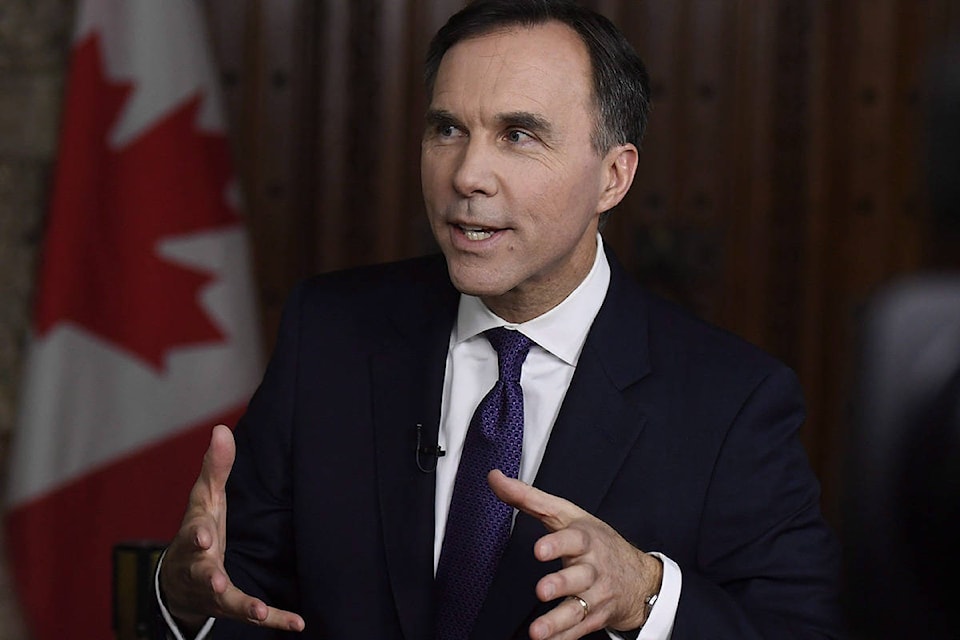Ottawa’s budget promises more consistent funding for CanNor, and money for the environment and foster care but leaves some questions about what the Yukon’s transfer payment will look like in the future.
Yukoners got their first look at the federal budget when it was released Feb. 27. The document provides the broad strokes of where Ottawa plans to spend its money.
The Canadian Northern Economic Development Agency (CanNor) is getting ongoing core funding of $20 million a year.
That’s a “major improvement,” said Peter Turner, the president of the Yukon Chamber of Commerce. In the past CanNor has worked on three-year funding cycles, making it difficult for organizations looking for multi-year funding, Turner said.
“In the old days if it was the third year of a funding cycle the most they could commit to would be one year of funding.”
The budget makes a vague promise to “explore ways to simplify the existing suite of 22 programs offered by the regional development agencies.” That includes the Strategic Investments in Northern Economic Development (SINED) program that is currently part of CanNor.
Yukon Party MLA Brad Cathers acknowledged that more details on the plan might be coming. But if the budget’s talk of “program consolidation” means opening the money up to other jurisdictions, that could make things harder for the territories to compete, he said.
Smaller Yukon governments “don’t have the same resources as a lot of governments do down south,” he said.
No one with the federal government was immediately available to clarify that section of the budget.
Money for a new redundant fibre optic line in the Yukon was not explicitly listed in the budget.
“I’m hoping that I just haven’t uncovered it,” Turner said. “But I would be disappointed if there’s no money for that because I think that’s a much steeper hill to push the rock up if we’re not getting some support from the federal government.”
Turner said the chamber is in favour of the Dempster route, as opposed to one through Alaska, because it gives more communities redundancy.
Yukon MP Larry Bagnell said money for a new fibre optic line could come out of the federal government’s infrastructure funding that is being negotiated with the territory. But for now he’s not in a position to say.
“I can say that it’s a high priority for me and that there’s sufficient money in our infrastructure funds for the two governments to do that, but … I haven’t been told that this project is signed, sealed and delivered, or any other particular projects,” he said.
The federal government has promised $1.3 billion over five years for “one of the most significant investments in nature conservation in Canadian history,” according to the budget document.
That includes $500 million from the federal government to create a new $1-billion Nature Fund “in partnership with corporate, not-for-profit, provincial, territorial and other partners.”
Details of how the money will be handed out haven’t been released, but Chris Rider, the executive director of the Canadian Parks and Wilderness Society’s Yukon chapter, said he believes land-use planning in the Yukon could qualify.
Earlier this year more than 100 MPs signed a letter to federal Finance Minister Bill Morneau asking for $1.4 billion over three years in environmental investments, the Globe and Mail reported.
That letter, which included Bagnell’s signature, specifically mentioned land-use planning, Rider said.
“Land use planning is a costly exercise, frankly and to do it right requires a lot of energy, and a lot of resources,” he said.
The territory’s transfer payment from Ottawa will be just over a billion dollars in 2018-19, Bagnell said. That’s an increase of $32.7 million over last year.
The budget’s fine print provides a few more details of what Yukon’s transfer payment might look like in the years after that.
Transfer payments are reviewed every five years. The next deal is slated to start in 2019.
According to Ottawa’s budget this year, the renewed deal will include “technical changes to improve the accuracy and efficiency of the calculation of entitlements.”
The Yukon will be getting an extra $1.3-million “transition payment” from 2019–20 until 2023–24 “to offset projected negative impacts of the changes on TFF entitlements over the course of the renewal period,” the document says.
No one is saying how Ottawa came up with the $1.3 million number. Bagnell did not have any specifics and requests to Finance Canada for more information were not answered in time for today’s deadline.
The Yukon government also has no information on how future payments will be calculated, said a spokesperson for the territory’s finance department. Still, they’re taking Ottawa’s word that the extra transition payment means no changes for the Yukon’s bottom line.
“There would be a reduction but this bumps us back up making us whole again. Essentially, there is no net change,” said Yukon finance department spokesperson Eric Clement.
Cathers seemed less confident.
“It’s not entirely clear to us what the implications of that will be and whether the transition payments it refers to will fully compensate for those negative impacts or not.”
Ottawa has renewed a 15 per cent mineral exploration tax credit for junior exploration companies for another year.
The federal government is also promising more help for Indigenous children in foster care. The budget includes more than $1.4 billion in new funding over six years, starting in 2017–18, for First Nations Child and Family Services. Details of how that money will be rolled out haven’t been released.
Yukon Premier Sandy Silver was not made available for interviews following the release of the federal budget.
Contact Ashley Joannou at ashleyj@yukon-news.com
